Last updated on January 22nd, 2024 at 13:19
There is little question regarding the quality of the coffee beans at Starbucks, but brewing them and making a killer barista quality cup of coffee takes skill and effort.
You need to do this part right or no matter how good your beans are, you can still end up with a poor quality coffee. If you have bought a Starbucks espresso roast and want to know how to brew Starbucks espresso roast, this article is for you!
Let’s start by talking a little about this special roast.
What Is Starbucks Espresso Roast?
Table Of Contents
Starbucks espresso roast is a very special and beautiful blend of coffee from Asia Pacific and Latin America that has been expertly roasted at Starbucks own in-house roastery. The exact details are kept a top secret.
Some coffee connoisseurs have guessed at Indonesian Sumatra volcanic coffee and Colombian coffee being used.
The resulting coffee is said to have a full-bodied, dense caramel sweet and stout taste that pulls through in milk-based drinks. It is the perfect espresso roast that works well for a home-brewed cappuccino, latte, cortado, and a flat white.
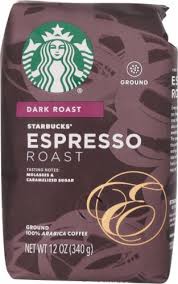
Read: Espresso powder Vs Ground espresso
Starbucks Espresso Roast Tasting Notes
On the coffee company‘s official website they give specific attention to the rich caramelly sweetness produced. I tried this as a ristretto, a shot of espresso, and some classic espresso drinks that have a milk base.
What I noted was the fuller body, intense bold flavor that really comes through the milk base.
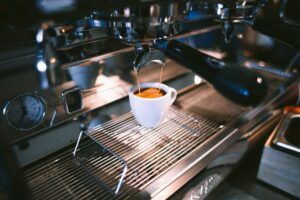
How To Brew Starbucks Espresso Roast Like A Pro Barista
To brew this espresso roast and get the best results you will need a few pieces of coffee brewing equipment.
- Freshly roasted Starbucks espresso roast beans, whole ungrounded beans are best.
- A coffee grinder. A ceramic burr grinder is best. A manual hand grinder is also a good choice.
- A quality home espresso machine.
- A digital coffee scale.
The equipment above is nothing out of the ordinary for any budding home barista needs to make a range of high quality espresso beverage and espresso based drinks.
Step 1: Starting At The Very Beginning!
Starting at the very beginning by ensuring all of your coffee gear and coffee making equipment is clean, well calibrated and ready to get the very beast out of this Latin American and Asian blend.
The last thing you want is a touch of aftertaste of old leftover coffee grounds from your grinder or anything still in your home espresso maker, be it old dried in coffee in the tubes or lime scale or other mineral deposits.
Give your machine and grinder a good clean.
Now would be a good time to pay attention to calibrating your coffee scales to ensure you are getting the correct weight of coffee grounds and water for other brewing methods and techniques.
Step 2: Grind Your Beans
Using a very fine setting, I like to use the finest setting possible. I like a strong, intense espresso shot. I am a big fan of a ristretto, which, by all means, is a focused espresso. The quality of espresso coffee and classic espresso drinks depends on your grind size and the contact time of the water with the coffee grounds.
An espresso cannot be made without a very fine powder like grind size and thus, the smallest setting on almost all grinders is best.
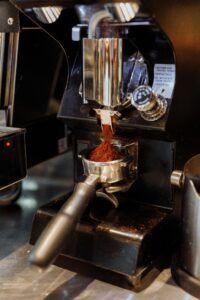
Step 3: Weigh Your Grounds
Typically, 18g to 21g is suitable for most people. I err on the side of strong at 25 grams for an espresso shot and 30 grams for milk based drinks as I want the intense bold flavor of this dark roast to come through and above the milk and milkiness.
As much as I love an espresso, I am a sucker for a latte and want more of the coffee flavor to come through than a simple milky drink.
As a home barista or professional barista your goal with specialty coffee like the Starbucks espresso roast, is to bring the unique tastes of the coffee into the drink, even the milk based ones, for the drinker to experience the unique tastes of the blend.
Step 4: Tamper Your Grounds
Tamping is an important and easy skill to master. Simply take your time to get it right every single time.
Get your tamping wrong, and you can end up with channelling, poor quality crema or, worse still, no crema at all. Some sites and people will tell you to tap your coffee grounds with your finger Never do this. Never, never ever.
The oils from your skin will affect the coffee!
Always use a proper tamp for tamping and getting a perfect even tamp. The tamp, if you are weighing, should fit your portafilter perfectly and weigh 30 pounds (14 kg approx).
If your machine has a tamp fitted to it, develop a feeling for the pressure that is required.
Too strong a tamp and too weak are both detrimental to the end result. You need to get that middle balance. Practice and patience, and you will get it right every time.
Step 5: Add Water To Your Water Tank
When you are using top quality beans and want great coffee as a result you should use the best quality water that you can. The quality of the water can really make a big difference to the end result.
At the very minimum, use filtered water. I have developed the good habit of boiling water then filtering it in a standard water filter and then re-boiling the water and then re-filtering before filling my water tank.
This small step helps to improve the water quality and helps to maintain my espresso machine, keeping it free from scale.
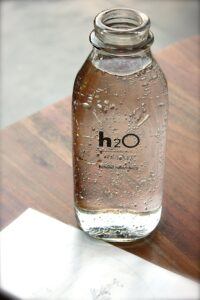
Step 6: Start Extracting Your Coffee
Get your best shot glass and start extracting your coffee. The extraction should take from 20 to 30 seconds depending on your machine. Typically, 25 seconds is a good extraction time.
If and when all the variables, such as grind size, weight of coffee grounds, water temperature and water pressure, tamping are perfect, only then adjust your machine.
Adjusting your machine should be the last thing that you do. Only adjust if your end result is not perfect or producing a good quality shot of espresso.
It is set right then you should only make alterations to it if it is under-extracted coffee that is watery or over-extracted or bitter coffee.
Step 7: Serve And Enjoy Your Starbucks Espresso Roast
The final and best step. Serve and enjoy your espresso. Dark mini chocolate bar goes very well with this coffee.
Enjoy!
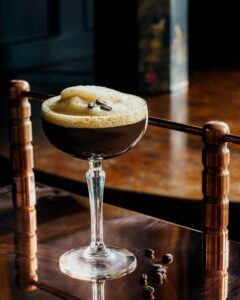
Frequently Asked Questions About How To Brew Starbucks Espresso Roast
Can You Use Starbucks Espresso Roast As Regular Coffee?
Yes, if you love the deep, dark and full-bodied taste and really enjoy the coffee, then absolutely you can use Starbucks espresso roast as your regular coffee. It’s a rich coffee that tastes great and works well with a number of brewing methods, coffee machines and coffee makers.
Is Espresso Roast Same As Espresso?
No,
an espresso roast is a specific roast level and roast profile that is usually a dark roast, normally at least a French roast but can be in certain cases a Vienna roast or even as high as an Italian roast. An Espresso coffee is a specific coffee brewing method that uses a coffee to water ratio of 1:1.5 and is one ounce (30 ml) in volume.
Is An Espresso Shot Just Black Coffee?
No, there are a number of different black coffees including but not limited to a ristretto, a caffe Americano, a café lungo, red eye and a lot more. Each of coffee drink has its own recipe and way of making them.
An espresso is a short black coffee made with pressurized hot water at 9 bars pressure (130 PSI) and a coffee to water ratio of 1:1.5 and only 30 ml (1 ounce) with a brew time of 25 seconds with a variance of plus or minus 5 seconds.
The grind size required for an espresso is a very finely ground coffee at 200 microns. To make it well you need fresh coffee beans that are oils and of a dark roast.
Does Espresso Roast Have More Caffeine?
No, an espresso roast does not have more caffeine. The opposite is true: it has less caffeine than other types of coffee. An espresso is a highly caffeinated cup of coffee due to the very focused coffee to water ratio and brewing with hot water.
Can You Use Starbucks Espresso Roast For Cold Brew?
Yes, Starbucks espresso roast makes a great, strong and bold tasting cold brew coffee. To make a good cold brew with your Starbucks espresso roast, use a coffee to water ratio of 1:8 and a very coarse and even grind size.
Can You Use Starbucks Espresso Roast In French Press?
Yes, the French press and the full immersion brewing that you enjoy with the French press is great with these coffee beans.
Frappé-Ing It All Up! – How To Brew Starbucks Espresso Roast
There is nothing difficult at all when it comes to brewing Starbucks espresso roast. Follow the steps in this article as laid out above, and you will get the best and freshest possible taste from your investment in both the required equipment and your coffee beans.
Having spent good money on those beans, store them well in a proper air-tight coffee canister with a one-way valve. Then store your coffee cannister in a cool dark place away from strong lights. The perfect place is your fridge for maximum freshness.
If any of your friends or contacts need or want to know how to brew Starbucks espresso roast send them a link to this article.
Join our active, fun, and very informative coffee community on Facebook/Meta and join in by sharing your coffee recipes, coffee creations and your favorite funny coffee memes, jokes and quotes.





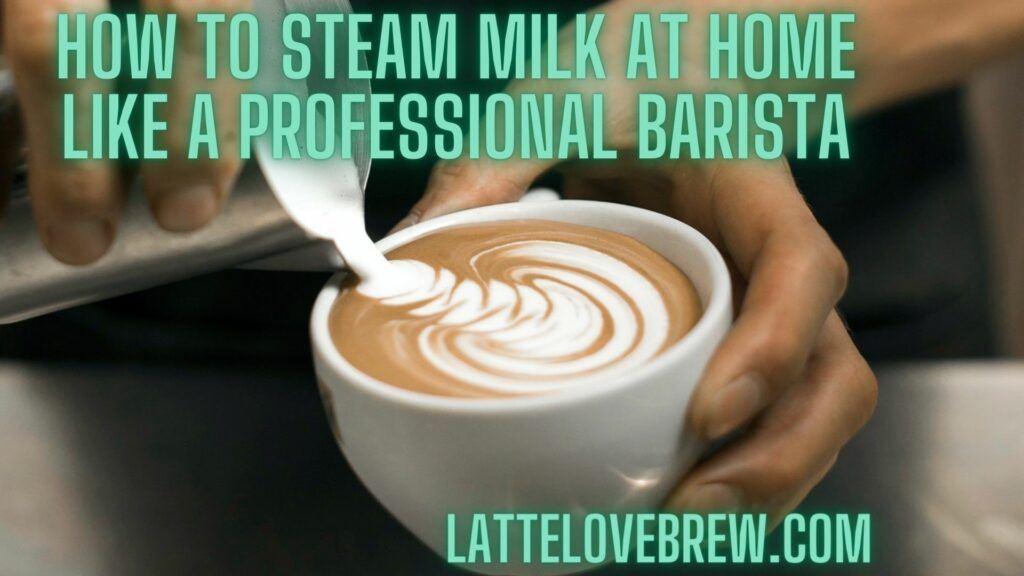
![[Recipe] How To Make Dunkin Iced Coffee At Home Like A Pro!](https://lattelovebrew.com/wp-content/uploads/2022/04/Recipe-How-To-Make-Dunkin-Iced-Coffee-At-Home-Like-A-Pro-1024x576.jpg)
